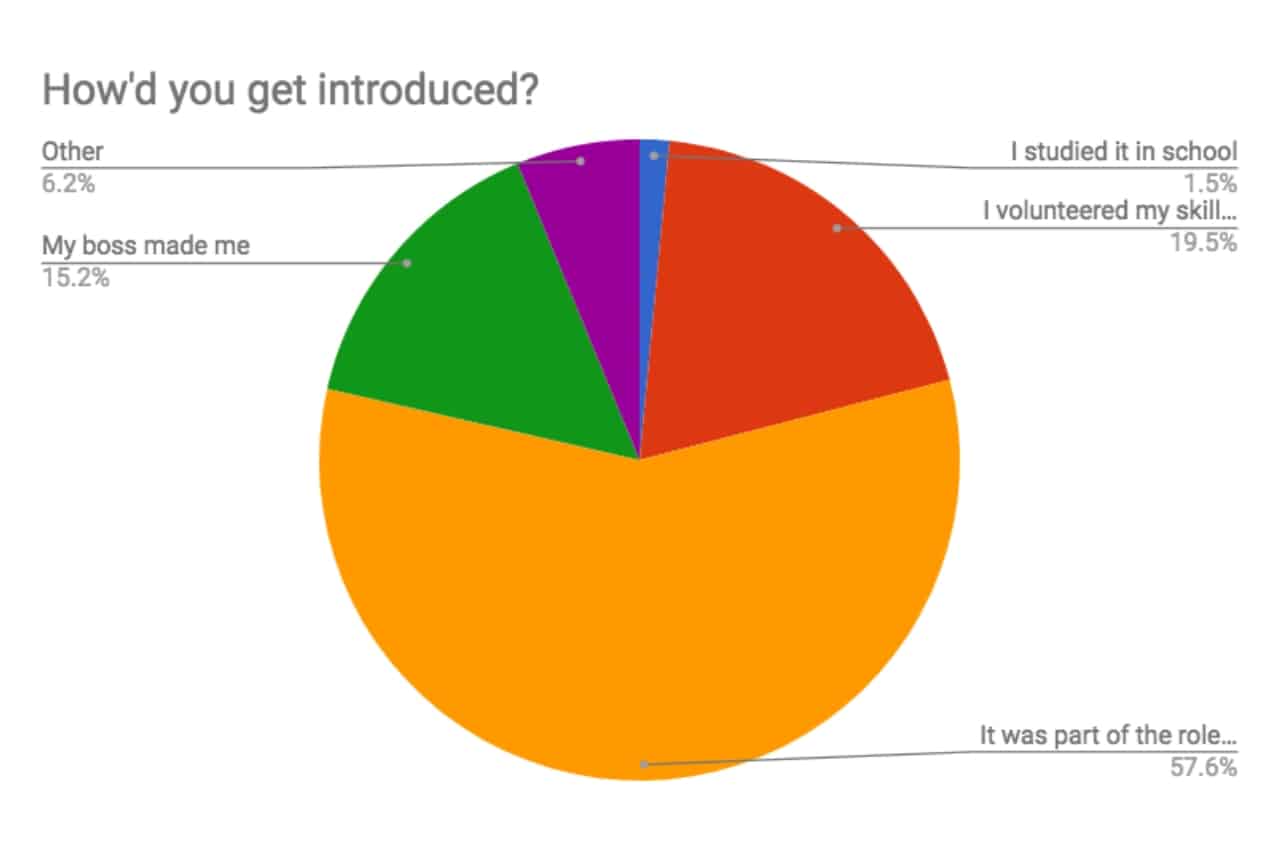
2018 Email Industry Conditions
Wondering what is going on in Email? We surveyed thousands of people in email to get their outlook, skills, teams, history, and strategies.
August 24th, 2020
You need to think strategically and empathetically when deciding how often to email your customers.

How many emails should I send customers the first 30 days after they register? What are your open rates like? What about retention, activations, or even payments? How do I know if I’m sending too many emails?
These questions are common and understandable. But, in my opinion, they are misguided, too granular, and missing the greater point.
As an email strategist, when I get specific questions like these, I push clients to take a step back. In other words, what is the purpose of your email program in the first place and how can you effectively partner (yes, partner) with your customers to come to win-win scenarios.
The truth is that a lot of context and critical thinking is needed to decide how to onboard new customer segments as well as how to keep a meaningful relationship with them on an ongoing basis.
It’s true that you want to avoid being over-aggressive with your customers but not enough people talk about the opposite issue, which is not being aggressive enough in helping your customers realize the full potential of why they signed up for your product or service in the first place.
So, if it takes a ton of critical thinking and context to nail your email messaging cadence, then what is a good framework for coming up with an intuitive MVP so that you are starting in the right ballpark?
I recently conducted a brainstorm with a startup group in Asheville, NC that is in its infancy and had two, not just one, target audiences that needed very different email strategies.
What started out as a discovery meeting where I was asking lots of questions and even ‘winging-it’ from a solutions standpoint luckily turned into a framework that I believe is company and industry agnostic and can help many of you when considering onboarding and ongoing cadence.
Before I share my framework idea, let’s cover some definitions.
Cadence vs Frequency
For whatever reason, the nuances between these two terms have tripped me up in the past. Therefore, I decided to grab some concise definitions from a third party. Here taken directly from Fulcrumtech.net.
Whereas frequency is the number of emails sent in a given period of time, cadence encompasses the timing and pattern of emails sent. For example, cadence includes how many emails are sent and the amount of time between each of the emails, as well as the email content and the audience receiving the emails.
In other words, frequency is a more narrow definition and is better discussed for email tactics around a specific time frame. And cadence is more holistic. You could use either to inform most discussions around email programs and especially things like 30-day onboarding.
Regardless, I’d recommend first looking at things from an even higher level.
A Simple Framework to Use for Determining a Scalable Cadence
As is with most great frameworks, simplicity can be an asset. And with that in mind, here are my recommendations for deciding on cadence strategies for your audiences:
1) Define your highest-level parent segment(s)
2) For each segment, create two columns to list and rank the actions you most desire these segments to do. This will be your ‘impact rank’.
3) Now add a third column to rank the ‘tolerance’ level you perceive those users to have for getting requests to make those actions with 1 being very tolerant and 5 being very intolerant. This will be your ‘tolerance rank’.
Coming up with the actions (i.e. business metrics) your company desires most should be rather easy. Doing the same exercise around ‘tolerance’ should be a little more difficult. In this case, you need to use your empathy and put yourself in the customer’s position.
Now, to illustrate the framework further, here’s a simple snapshot of what this exercise could yield like for Airbnb. NOTE: I did this just for fun and did not consult with anyone at Airbnb to come up with the strategy.
Parent Segments:
A: Hosts
B. People Searching for a Place to Stay
Table for Hosts:
Table for Prospective Guests
Explaining My Tables
The first thing you probably noticed for the ‘Hosts’ table is that the impact and tolerance ranks are matching up. I did this to make a point that, in general, I see hosts and Airbnb as sharing the same business goals. They are essential partners, given the rev-share model. If the hosts win, Airbnb wins.
And so when Airbnb starts nudging a host to complete or improve their profile, it should be quite easy to justify a fairly aggressive cadence of emails both for the marketer and for the recipients. Things like ‘Improve Your Profile to Land Your First Guests’ should be palatable to receive. Even several times as long as the tactic and subject line changes each time.
However, for prospective guests, you have a different ball-game. You are going to have so many different child segments that sign up and are only passively looking and may end up booking their next trip using another service. And just because they don’t use Airbnb this time doesn’t mean they couldn’t be a customer in the future — as long as you don’t piss them off.
That’s why for this parent segment I have lower levels of tolerance and you need to take a less aggressive strategy. If you are not realistic and focus on a long-term strategy then you could create a relationship that feels too desperate and gets them to unsubscribe.
For example, just because I registered doesn’t mean I want to create a wish list or book a stay. I’m just in my research stage. And just because I had a successful stay does not mean I want to leave a review. I may not see the value in that or may have had a mediocre experience and don’t feel like being honest because I knew what I was getting into already.
Additionally, if I’ve already used your service then I may be more tolerant to an ongoing relationship and using Airbnb again — especially if it was a positive experience. I put the tolerance # as 2 for booking a subsequent stay — meaning you could more confidently check in with this person and keep them updated on new features, specials, etc. You can also track browse and save criteria to inform your follow-up tactics.
I could go on, but you probably get the point already. The above model is not going to tell you exactly how many emails to send or what tactics to use. But it can give you confidence on how aggressive you can be for dedicated emails around certain actions. And, for me, that’s a great place to start.
Categories:
TutorialsDrew is the former Head of Lifecycle Marketing at Grammarly and has 13+ years of dedicated email channel experience managing large B2C programs. He now consults and creates e-learning content full-time under his 10 Billion Emails brand (www.10billionemails.com) and specializes in helping the next generation of marketers create smart, scalable email programs. Superpowers include working with large SFMC customers, proactive deliverability strategies, and helping startups build foundational MVPs.
Dive into the world of unmatched copywriting mastery, handpicked articles, and insider tips & tricks that elevate your writing game. Subscribe now for your weekly dose of inspiration and expertise.